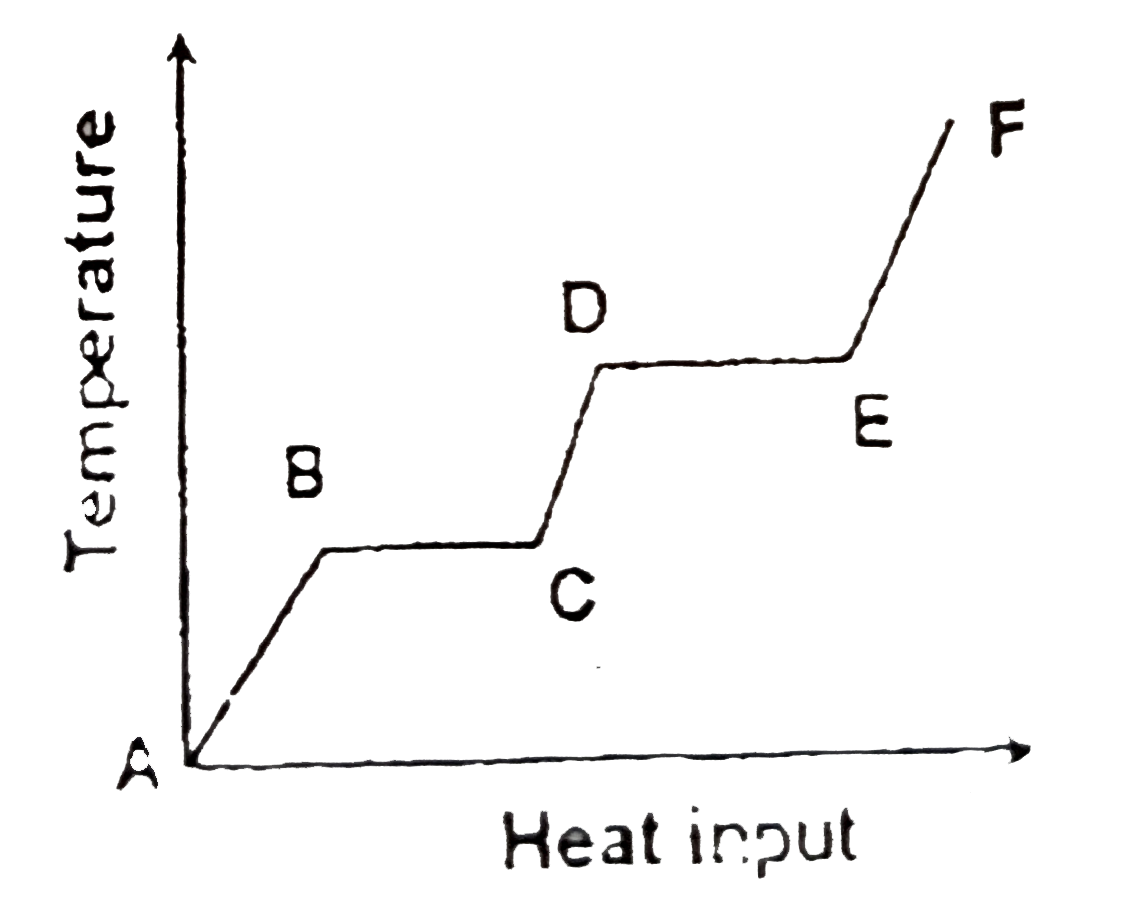The variation of temperature of a material as heat is given to it at a constant rate is shown in the figure. The material is in solid state at the point O. The state of the material at the point P is…..

AB represents a process when physical state changes from solid to liquid and the temperature remains unchaged. Since P is a point between A and B the material is partly solid and partly liquid.
Topper's Solved these Questions
- ARCHIVES 1 VOLUME 6BOOK - CENGAGE PHYSICS ENGLISHCHAPTER - ARCHIVES 1 VOLUME 6EXERCISE - True/False
7 Videos
- ARCHIVES 1 VOLUME 6BOOK - CENGAGE PHYSICS ENGLISHCHAPTER - ARCHIVES 1 VOLUME 6EXERCISE - Single Correct
54 Videos
- ARCHIVES 2 VOLUME 6BOOK - CENGAGE PHYSICS ENGLISHCHAPTER - ARCHIVES 2 VOLUME 6EXERCISE - Integer
4 Videos
Similar Questions
When a ferromagnetic material is heated above its Curie temperature , the material
View SolutionWhat is a fuse ? Name the material of fuse. State one characteristic of the material used for fuse.
View SolutionA solid material is supplied with heat at a constant rate. The temperature of the material is changing with the heat input as shown in the graph in figure. Study the graph carefully and answer the following questions:

(i) What do the horizontal regions AB and CD represent?
(ii) If CD is equal to 2AB, what do you infer?
(iii) What does the slope of DE represents?
(iv) The slope of OA>the slope of BC. What does this indicate?
View SolutionThe variation of vapour pressure of different liquids with temperature is shown in figure

Calculate graphically boiling points of liquids A and B.
View SolutionA solid material is supplied heat at a constant rate. The temperature of material is changing with heat input as shown in the figure. What does the slope of DE represent ?

View SolutionThe rate of flow of heat through 12 identical conductors made of same material is shown in the figure. Then, which of the following is correct ?

View SolutionThe weight of an object on the surface of the Earth is 40 N. Its weight at a height equal to the radius of the Earth is
View SolutionWhen we raise the temperature of a body, the molecules and atoms move with greater kinetic enery. Assume that "the temperature" is the manifestation of only the kinetic energy is atomic and subatomic levels and no mass change (excess//defect) occurs due to heating. Now a solid material is supplied with heat at a constant rate. The temperature of the material is changing with the heat input as shown in the graph. BC and DE are parallel to the Heat-input axis
In BC and DE

View SolutionWhen we raise the temperature of a body, the molecules and atoms move with greater kinetic enery. Assume that "the temperature" is the manifestation of only the kinetic energy is atomic and subatomic levels and no mass change (excess//defect) occurs due to heating. Now a solid material is supplied with heat at a constant rate. The temperature of the material is changing with the heat input as shown in the graph. BC and DE are parallel to the Heat-input axis
In AB, CD and EF, the energy of the system increases. Here "energy" refers to

View SolutionWhen we raise the temperature of a body, the molecules and atoms move with greater kinetic enery. Assume that "the temperature" is the manifestation of only the kinetic energy is atomic and subatomic levels and no mass change (excess//defect) occurs due to heating. Now a solid material is supplied with heat at a constant rate. The temperature of the material is changing with the heat input as shown in the graph. BC and DE are parallel to the Heat-input axis
In which of the following phase the assumption made in the above comprehension is most precise ?

View Solution
